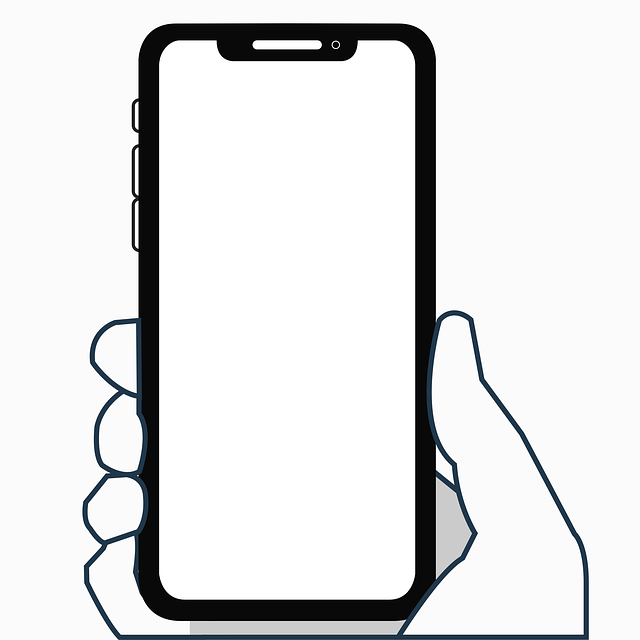In today's digital era, Mobile-Friendly Design is crucial for online success. With most internet users accessing sites via mobile, skilled designers create exceptional touch-optimized experiences through responsive layouts, swift loading times, and user-friendly interfaces. Using tools like Bootstrap, React, and Figma, they ensure accessible designs that cater to diverse audiences across various devices. Key aspects include UX focus, optimized content, and fast performance, exemplified by successful apps like Airbnb and Uber. The future involves dynamic layouts, enhanced accessibility, AR/VR interactions, and quicker 5G performance, revolutionizing mobile experiences.
In today’s mobile-first world, a seamless user experience on smartphones and tablets is non-negotiable. Expert mobile web designers play a pivotal role in creating sites that captivate and convert across devices. This article delves into the essentials of mobile-friendly design, exploring the skills, tools, and trends shaping this dynamic field. From UX best practices to responsive design strategies and successful case studies, discover what goes into crafting exceptional mobile experiences.
Understanding Mobile-Friendly Design: The Modern Standard

In today’s digital era, mobile-friendly design is no longer an option but a necessity. With the vast majority of internet users accessing websites through their smartphones and tablets, ensuring your website is optimized for mobile devices has become the modern standard. Mobile-friendly design isn’t just about having a responsive layout that adapts to different screen sizes; it’s about creating an exceptional user experience tailored for touch interactions. This includes simplifying navigation, optimizing content for smaller screens, and leveraging fast loading times to keep users engaged.
Expert mobile web designers understand the unique challenges and opportunities presented by mobile platforms. They leverage best practices and cutting-edge technologies to build websites that are not just visible but truly vibrant on mobile devices. By prioritizing user needs and staying up-to-date with industry trends, these professionals ensure that the sites they create not only meet but exceed expectations, ultimately driving higher engagement, retention, and conversion rates for their clients.
Essential Skills for Expert Mobile Web Designers

In today’s digital era, mobile-friendly design has become a cornerstone for any successful online presence. Expert Mobile Web Designers must possess a multifaceted skill set to meet this demand. Proficiency in HTML5 and CSS3 is non-negotiable, as these languages form the backbone of creating responsive websites that adapt gracefully across various devices. Understanding user experience (UX) principles is equally vital; designers must craft interfaces that are intuitive, visually appealing, and easy to navigate on smaller screens.
Beyond technical prowess, creativity and problem-solving abilities are key. Designers should be adept at translating complex web functionalities into streamlined, mobile-optimised solutions. Staying updated with the latest design trends, tools, and platforms is crucial as well, ensuring that their work remains cutting-edge and competitive in a dynamic market.
Tools and Technologies Shaping Mobile Design Today

The evolution of mobile design is a testament to the ever-changing digital landscape, driven by innovative tools and technologies. Today’s mobile web designers leverage a robust array of resources, including advanced CSS frameworks like Bootstrap and Foundation, which expedite the creation of responsive, mobile-friendly designs. JavaScript libraries such as React and Angular further enhance interactivity and dynamic content delivery, ensuring seamless user experiences across various devices.
Additionally, design software like Sketch, Figma, and Adobe XD play a pivotal role in the prototyping and visual development stages. These tools enable designers to craft intricate interfaces, incorporating intuitive layouts, vibrant colors, and crisp typography that captivate users. With the widespread adoption of these technologies, mobile-friendly design has become not just an option but an imperative, shaping user interactions and setting new standards for digital accessibility.
User Experience (UX): Prioritizing Accessibility and Simplicity

In the realm of mobile-friendly design, User Experience (UX) is paramount. Expert web designers understand that creating a seamless and intuitive experience for users on their smartphones and tablets requires prioritizing accessibility and simplicity. This involves ensuring that websites are navigable via touch interfaces, with clear and concise layouts that adapt gracefully to different screen sizes. By implementing responsive design principles, these professionals craft interfaces that load quickly, minimize scrolling, and provide an easy-to-use layout, enhancing user engagement and satisfaction.
Accessibility is another critical aspect of UX in mobile web design. Top designers ensure their creations cater to a diverse audience by adhering to accessibility guidelines such as WCAG (Web Content Accessibility Guidelines). This includes incorporating features like alternative text for images, proper heading structures, and keyboard navigation support. Such considerations not only make websites more inclusive but also benefit all users by improving discoverability and usability across various devices.
Responsive Design Strategies for Optimal Viewability

In the realm of mobile web design, ensuring optimal viewability across various devices is paramount. Responsive design strategies are pivotal in creating a seamless user experience, regardless of whether one is viewing a website on a smartphone, tablet, or desktop computer. The primary approach involves using flexible grids and images that adapt to different screen sizes, ensuring content remains legible and easily navigable. CSS media queries play a crucial role here, allowing designers to apply specific styles based on device characteristics, thereby enhancing overall aesthetics and usability.
A key aspect of responsive design for mobile-friendly websites is the utilization of relative units like percentages instead of fixed pixels for layout elements. This adaptability ensures that designs scale gracefully across different platforms, preventing content from becoming distorted or obscure. Additionally, optimizing images by compressing them without compromising quality significantly contributes to faster loading times, a vital factor in retaining user interest and engagement on mobile devices with varying data connectivity.
Case Studies: Successful Mobile Websites and Their Designs

Successful mobile websites serve as a goldmine for understanding best practices in mobile-friendly design. Case studies reveal that intuitive navigation, optimized layouts, and fast loading times are key components of user engagement on smartphones and tablets. For instance, consider the success of companies like Airbnb and Uber; their mobile interfaces prioritize simplicity and ease of use, allowing users to quickly access services with just a few taps.
These case studies highlight responsive design as a critical aspect. Adapting websites to various screen sizes ensures that content is legible and interactive across devices. Additionally, incorporating touch-friendly elements, like large buttons and gestures for navigation, further enhances the user experience. Such strategies not only cater to users’ expectations but also improve search engine optimization (SEO), making these mobile-optimized sites more visible and accessible.
Future Trends in Mobile-Friendly Design

As technology continues to evolve, so do the expectations of users regarding mobile-friendly design. Future trends in this field are set to focus on even more immersive and personalized experiences tailored to individual preferences. One notable development is the increased adoption of dynamic, adaptive layouts that seamlessly adjust to various screen sizes and orientations, ensuring a consistent user experience across devices.
Additionally, there will be a greater emphasis on accessibility features, making mobile websites inclusive for all users, including those with disabilities. Interactive elements will become more sophisticated, utilizing augmented reality (AR) and virtual reality (VR) technologies to create engaging and interactive interfaces. With the rise of 5G connectivity, we can also expect faster loading times, enabling designers to push creative boundaries without compromising performance.
